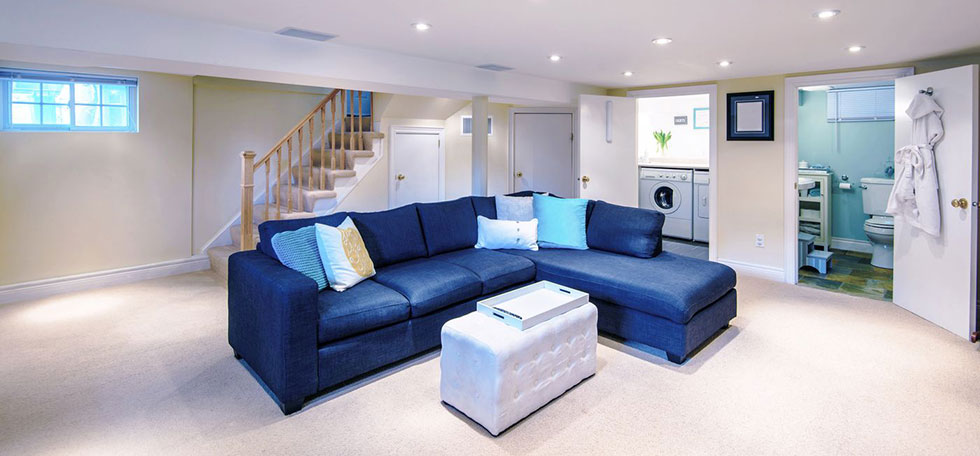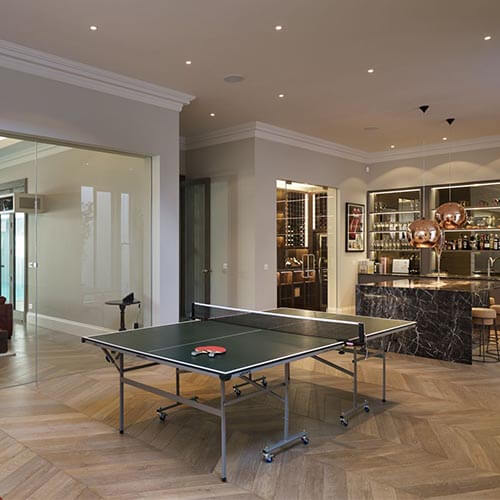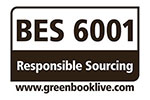01732 360 095
For any basement conversion or below ground-level building project, some level of waterproofing will be required. The desired use of the basement will determine how dry the below-ground space needs to be and the level of waterproofing required.
What Exactly is a Dry Basement?

The desired use of the basement will usually dictate the level of dryness required. Underground municipal car parks, for example, will not need to be as dry as a habitable basement, so it may be acceptable if there are some damp patches or puddles. A residential basement or office space, however, will be required to be completely dry and the waterproofing systems needed will be different to reflect the different levels of dryness.
To enable us to choose the level of dryness we require for our basement area, different grades of the internal environment have been identified. These grades give a clear view of the levels of acceptable dampness in different underground environments and depend on how dry the internal space has to be. Waterproofing products and systems are then selected to provide the waterproofing protection necessary to achieve the required grade.
Identify the problem: Waterproofing or Damp Proofing?
Required Performance Levels for Basements
The British Standard 8102:2022 is the ‘Code of Practice for Protection of Below Ground Structures Against Water Ingress’. To achieve successful basement waterproofing and a system that fulfils its design function, it is imperative to follow the recommendations and requirements of the British Standard as closely as possible. To give a clearer view of the different grades of basement waterproofing protection, this table clearly states the level of dryness that the waterproofing systems are expected to achieve and provides general examples in relation to basement usage.
| Grade | 1 | 2 | 3 |
| Basement use | Car parks, plant rooms (excluding electrical equipment), workshops. | Plant rooms and workshops requiring a drier environment. | Ventilated residential and commercial areas, including offices, restaurants, leisure centres |
| Performance | Some seepage and damp areas tolerable, dependent on the intended use. | No water penetration acceptable, damp areas tolerable, ventilation might be required. | No water penetration acceptable. Ventilation, dehumidification or air conditioning necessary, appropriate to the intended use. |
Choosing the Best Type of Basement Waterproofing
When you know which internal environmental grade you want to achieve for your basement, you can confidently select the best waterproofing system.
There are three types of basement waterproofing available, which can be used either on their own or in combination, depending on the level of protection required to achieve your required grade:
- Type A – Barrier protection, can be installed internally or externally
- Type B – Integral structural protection
- Type C – Drained waterproofing protection
Assessing the different methods: Basement Waterproofing Techniques
Generally speaking, the most comprehensive waterproofing designs utilise all three types of waterproofing to provide multiple layers of protection. However, it is widely accepted that Type C systems provide the most comprehensive, trouble-free, and effective form of protection and are generally recommended and used when a Grade 3 basement is required.
Type C: The Best Basement Waterproofing Method
Effective Dry Basement Solutions

At Newton Waterproofing, we supply a range of waterproofing solutions for a variety of applications and all three types of waterproofing protection.
For Type C basement waterproofing, we recommend the Newton CDM System – a comprehensive waterproofing system that can enable a basement to achieve a completely dry, Grade 3 environment. The system is designed to depressurise any water which penetrates the basement and safely remove it from the building.
Using BBA-certified cavity drain membranes from Newton System 500, the Newton CDM System also includes bespoke sump and pump configurations, backup systems, telemetry, and ancillary options from our Pumps and Controls System to create the most reliable underground waterproofing solution.
The Newton CDM System can be used in basement conversion and refurbishment projects to create a completely dry and habitable environment. It is equally effective in new-build basements where it can be incorporated into the overall building design as an integral element.
What you need to know: Waterproofing a New-Build Basement
The importance of maintainable waterproofing: Waterproofing Existing Basements
Professional Waterproofing Solutions from Newton Waterproofing
At Newton Waterproofing, we have extensive experience providing waterproofing solutions for a diverse range of construction and refurbishment projects. We can offer expert advice on the best waterproofing solutions for your particular situation and can provide bespoke waterproofing solutions by combining two or more of our high performing products.
As an example, in 2018, we successfully installed a range of waterproofing products for a high-end project in London’s Earl’s Court. This prestigious project involved converting a 7.4-acre car park into over 800 luxury apartments and London’s largest private resident’s club containing a cinema, gym, spa facilities, and swimming pool. Much of the residents’ club facilities were below ground and therefore required high levels of waterproofing. Have a read of the full story here.
If you are involved in a basement renovation or new-build project and you want the best designed and guaranteed waterproofing solutions for your basement, Newton Waterproofing can help. For more information about any of our products or services call 01732 360 095 or send us a message using the form below.
Customer Success Stories
Our latest customer reviews from Feefo - the award winning review platform

Speak to our friendly, expert team
Our staff are able to provide guidance for projects of all sizes, whether you require some general advice about damp or waterproofing, or support with technical drawings and specifications.





















